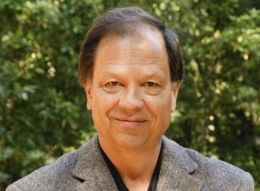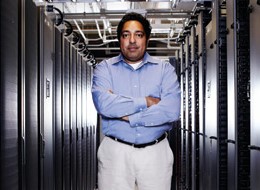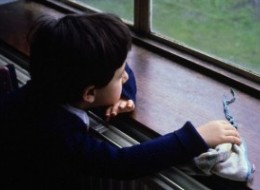When you say nothing at all: Living with an invisible illness
on April 17th, 2013 28 Comments
We’ve partnered with Inspire, a company that builds and manages online support communities for patients and caregivers, to launch a patient-focused series here on Scope. Once a month, patients affected by serious and often rare diseases share their unique stories; the latest comes from Iowan Dawn M. Nellor.
Imagine you’re a busy specialist, preparing to meet a new patient in your office…
You note that your patient only slightly smiles and seems a bit distant. Many of your patients come in with three backpacks full of medical records, yet she has nothing. If this patient is so ill, where are all her labs and tests? You note that she’s watching your every move, and you can’t help notice that she’s mainly watching your face. Where is her laundry list of symptoms and complaints, you wonder. You ask her what’s going on and what brings her in today. In a quiet voice she answers, “I’ve had pulmonary sarcoidosis for four years, and I’ve been having facial and hand pain for two years, and no one knows what’s wrong.” You’re puzzled by her, wondering why she’s monotone and aloof. Do you ask yourself, “Is that it, just one sentence from a chronically ill patient?” And do you feel concerned - or lucky?
As a person with a so-called invisible illness, my behavior at my last appointment with a specialist mimicked that of the patient in the scenario above. Why did I act this way? Because I was afraid to be there, and because I had low expectations for the visit. The behavior of past appointments with family practice physicians and specialists have numbed me to their raised eyebrows and the “look-away” that represents disbelief. I already know when the arms are crossed and the chair rolls back that the doctor’s next questions will be, “Are you sure it’s not stress? Do you exercise? Are you on antidepressants? Why don’t you see your psychiatrist, or try a different medication?”
There’s a major communication gap between chronically ill patients and some physicians. I don’t criticize every doctor by any means. But I feel that not enough physicians understand that both doctors and patients want and deserve respect, and to be heard. Patients don’t want to feel dismissed.
Based on my experience of not always having been heard, I’ve made changes in my life to empower myself. I live in a small community, but through online support groups I constantly talk with others affected by rare diseases to raise awareness on what life is like living with one or having a love one affected by one. I attend cognitive therapy weekly to take more control over various areas of my life and to be reminded that I still need to ask for help. I’ll soon be going to a pain management clinic that has an intense program in which a psychologist helps with coping skills related to the pain and a physical therapist works with you. I educate myself more through reputable medical sites, and I keep my primary care physician educated on clinical news.
As for changes physicians might consider, one way to improve physician/patient communication is for doctors to read and understand first-hand patient accounts - and to understand that if a patient isn’t saying much during an appointment, there’s probably a good reason. And I encourage physicians to be more aware of their body language when talking with patients, particularly those struggling to get the right diagnosis. If we sense that you’re frustrated even before you say hello, we’ll likely close up and just go through the motions during our appointment - like the patient did above. And how unfortunate would it be if you were the one doctor who could actually help that patient?
Dawn M. Nellor, of Audubon, Iowa, advocates for rare diseases and education on the stigma of invisible illnesses. She’s currently learning lobbying at the legislative level for sarcoidosis research and treatment. Her greatest joys in life are music and her pets, which include one Maltese dog and four cats.







